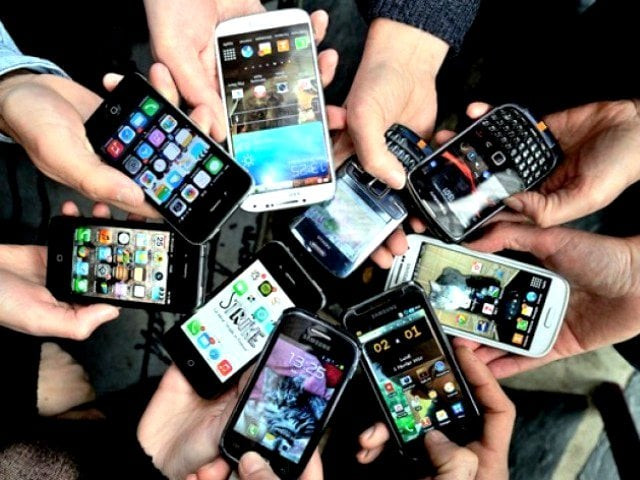Will newer companies outsmart smartphone giants like Samsung and Apple?
Do newer companies have all the right answers, or will smartphone giants like Samsung and iPhone always win?

PHOTO: AFP
When we speak about the evolution of the smartphone market, it is essential to address the evolution of the needs of the consumer. Hence, when we speak about the change in needs of the customer, it becomes imperative that we speak about the evolution of technology.
Over the last five years, various trends have dictated what major manufacturers do in terms of innovation and design. In the west, and to some extent, globally, the market is dominated by Samsung and Apple, with their S series and the iPhone series respectively. Both have countered each other to the extent to which, the only factor that convinces consumers to choose between the two is how familiar they are with the Operating Software on either phone.
However, with the introduction of Chinese brands such as Xiaomi, the smartphone market is now looking to cater to an audience that will arguably tilt the race towards either side. Budget smartphones have become the order of the day.
Considering how everyone in the modern day and age needs a phone capable of doing everything an iPhone can, but cannot necessarily afford that device; companies such as Xiaomi, VV have gained ground over their more expensive rivals.
Xiaomi recently came out with the Mi 6. As compared to the iPhone 7, the Mi 6 offers two SIM slots, comes with an Octa-core processor, 6GB RAM, an 8MP front facing camera and a 3350 mAh battery. With three times the RAM, a stronger front-facing camera, larger screen and a faster processor, this phone is a steal.
Having been released just last month, the Mi 6 is sold at Rs45, 000. Almost half the price of the IPhone 7, which was released last year.

Recently, manufacturers have been putting in considerable effort into perfecting their cameras, and more specifically, their front-facing cameras. The era of selfies has made companies focus on reducing Apple’s dominance, and we can say, they have done all in their power.
Huawei’s P10 Plus came out in February of this year and is in response to other high-end competitors on the market. Using the iPhone 7 as a benchmark yet again, the P10 Plus comes with dual SIM capabilities, a 5.5 inch screen, an Octa-core processor, dual back facing cameras, at 20MP and 12MP respectively, an 8MP front-facing camera, a 3750 mAh battery, allowing for a staggering 15 hours longer battery life than the iPhone.
However, for the amount of precision put into the build quality, the price is relatively steeper, coming in at Rs75, 000. Nevertheless, it is still a markedly better performing phone at a cheaper price-range than the iPhone.

However, the phone that ties in customer expectation and desired price-range for a device of its price, is none other than the OPPO F3 Plus. Having been released last month, the F3 Plus offers dual-sim capabilities, and has a screen size of 6.0 inches. It comes with an Octa-core processor, 4GB of RAM and expandable memory.
However, the most notable aspect of this device is the revolutionary front-facing camera. The dual front-facing selfie cameras, at 16MP and 8MP respectively stand out as the reason that this phone is considered the personification of the evolution of smartphones, as it caters to a generation looking for the perfect selfies.
The back-facing 16MP camera coupled with the ‘Bokeh effect’ and ‘facial recognition’ features form the complete photography experience. This phone also comes with a large battery sized at 4000mAh, which is also fast-charge ready.
What justifies this phone’s rise in popularity is its price-tag; offering all of what is mentioned above for a comparatively low Rs50, 000.

Customers want faster phones with better cameras and invincible batteries, all at affordable price points. Do the newer companies have all the right answers, or will smartphone giants like Samsung and iPhone always win?



















COMMENTS
Comments are moderated and generally will be posted if they are on-topic and not abusive.
For more information, please see our Comments FAQ